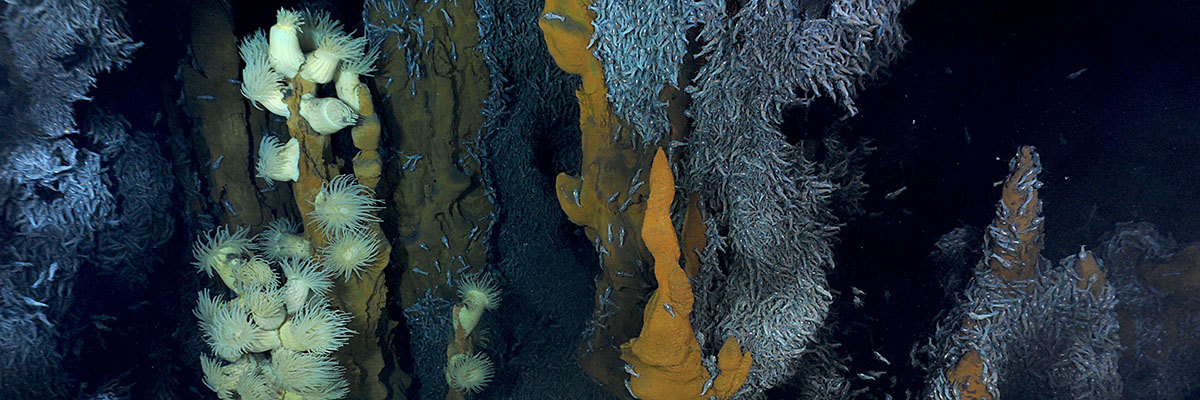INDEX 2015 Expedition
After four years of prospecting, INDEX 2015 was the first exploration cruise to locate and define active and prospective inactive sulfide sites.
From November 22nd to December 12th we had the pleasure of working in the Indian Ocean for the German Federal Institutes of Geosciences and Natural Resources (BGR) onboard the R/V Pelagia. This project had ROPOS diving as deep as 3400 metres in its “mid-depth” configuration but with its 5000 metre foam pack. This was our first time mobilizing on the R/V Pelagia, a vessel with a formidable crew operated by the Royal Netherlands Institute for Sea Research (NIOZ). The vessel was a great fit for ROPOS and we hope to be able to work onboard again in the near future.
As always, it was a privilege to work with BGR. Dr. Ulrich (Uli) Schwarz-Schampera, the cruise’s chief scientist, wrote the following about our cruise:“The Federal Institute for Geosciences and Natural Resources (BGR), Germany, greatly acknowledges the very successful, efficient and professional collaboration with CSSF and ROPOS during cruise INDEX 2015 with the Dutch research vessel R/V Pelagia between November 22 and December 12, 2015. BGR holds an exploration licence with the International Seabed Authority for marine polymetallic sulfides in the western Indian Ocean. After four years of prospecting INDEX 2015 was the first exploration cruise in the course of the 15 years-licence, locating and defining active and prospective inactive sulfide sites. In 12 ROPOS dives BGR could triple the surface occurrences of significant inactive polymetallic sulfide areas and identified the new ALPHA vent field along the southern Central Indian Ridge. More than 250 kg of sulfide ores and host rocks have been sampled, 18 vent fluid samples were taken, 36 sediment push cores and almost 300 different vent species were recovered during the ROPOS operations. CSSF provides a very high level of experience and with ROPOS an excellent tool in the field of sulfide exploration and the sampling of marine faunal diversity. BGR highly appreciates the collaboration with the excellent ROPOS team and intends to charter CSSF for future cruises again.”
By the Numbers
ROPOS sampling performance during the 12 dives each with 8 hours on bottom or less
250 kg
Sulfide ores and Rocks
ROPOS sampled over 250 kg of sulfide ores and host rocks. These samples, some as long as 1 metre, were carefully collected using our manipulators and placed in individual sampling boxes for recovery.
36
Sediment push cores
ROPOS sampled over 36 push cores. These push cores were collected using our manipulators and placed in holsters on our swing-arms.
300
vent species
ROPOS sampled over 300 vent species. These samples were carefully collected using our manipulators, scoop, nets, and suction sampler before being placed in individual sampling boxes, or jars in the case of the suction sampler.
18
vent fluid samples
With the help of KIPS, a multi-port valve-based fluid sampling system mounted underneath ROPOS, we collected 18 high temperature vent fluid samples directly with ROPOS perched on 10 to 70 metres tall chimney structures.
Image Credit: BGR/CSSF

